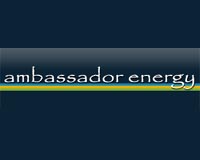 |
Leiden, Netherlands (SPX) Jul 07, 2009 An international team of researchers has modified chlorophyll from an alga so that it resembles the extremely efficient light antennae of bacteria. The team was then able to determine the structure of these light antennae. This is the first step to converting sunlight into energy using an artificial leaf. The researchers will be publishing an article on their research findings in the online Early Edition of the PNAS journal. Leiden researcher Swapna Ganapathy has obtained her PhD based on this subject, under the supervision of Professor Huub de Groot, one of the initiators of the research.
Forests at nano scale Two things are needed to generate fuel from sunlight: an antenna that harvests light, and a light-driven catalyst. The article in PNAS is about the first of these: the antenna.
Imitating light antennae of bacteria German colleagues from the University of Wurzburg in Huub de Groot's team modified chlorophylls from the alga Spirulina, such that they resembled the pigments of bacteria. De Groot's Leiden group then studied the structure of these semi-synthetic light antennae.
Nanotechnology De Groot and his colleagues successfully determined the detailed molecular and supramolecular structure of their artificial self-assembled light antennae. They did this using a combination of solid state NMR and X-ray diffraction (see attachment). X-ray diffraction enabled them to determine the overall structure and NMR allowed them to penetrate deeply into the molecules.
Stacking of molecules
New approach The new insights are coming in quick succession. Last month, De Groot, with an international team made up partly of different members, also reported a breakthrough in PNAS. In that article he showed how - also with a combination of NMR and another technique, namely electron microscopy - he had resolved the structure of the light antennae of the bacteria themselves. This allowed the researchers to explain how the antennae were able to function so quickly and so efficiently. Share This Article With Planet Earth
Related Links Leiden University All About Solar Energy at SolarDaily.com
 Ambassador Energy Introduces "Business In A Box"
Ambassador Energy Introduces "Business In A Box"Murrieta CA (SPX) Jul 03, 2009 Ambassador Energy is pleased to launch its proprietary sales and training program, the Ambassador Energy "Business in a Box." Recent advances in renewable energy technologies have made it easier for consumers and businesses alike to harness the power of our natural resources. From solar to wind to hydropower, the possibilities are endless. Entrepreneurs and business owners currently ... read more |
|
| The content herein, unless otherwise known to be public domain, are Copyright 1995-2009 - SpaceDaily. AFP and UPI Wire Stories are copyright Agence France-Presse and United Press International. ESA Portal Reports are copyright European Space Agency. All NASA sourced material is public domain. Additional copyrights may apply in whole or part to other bona fide parties. Advertising does not imply endorsement,agreement or approval of any opinions, statements or information provided by SpaceDaily on any Web page published or hosted by SpaceDaily. Privacy Statement |